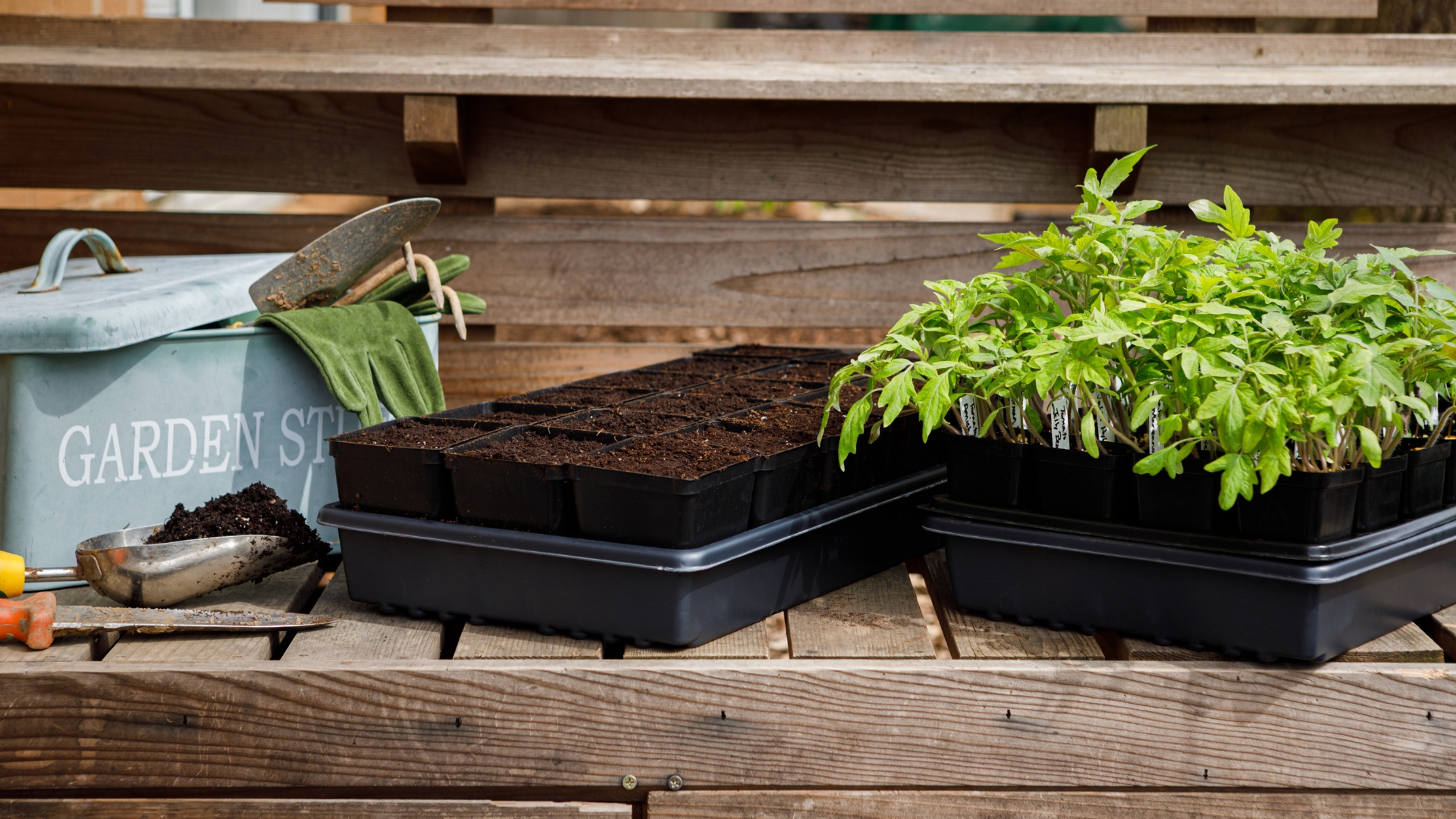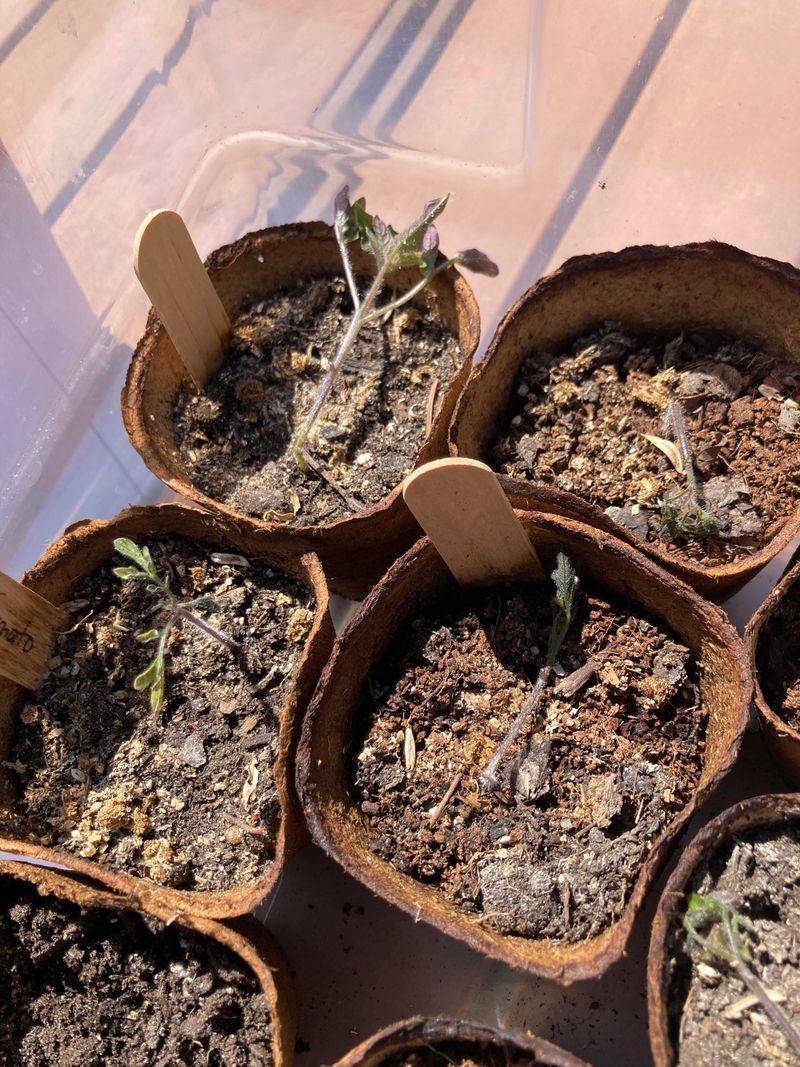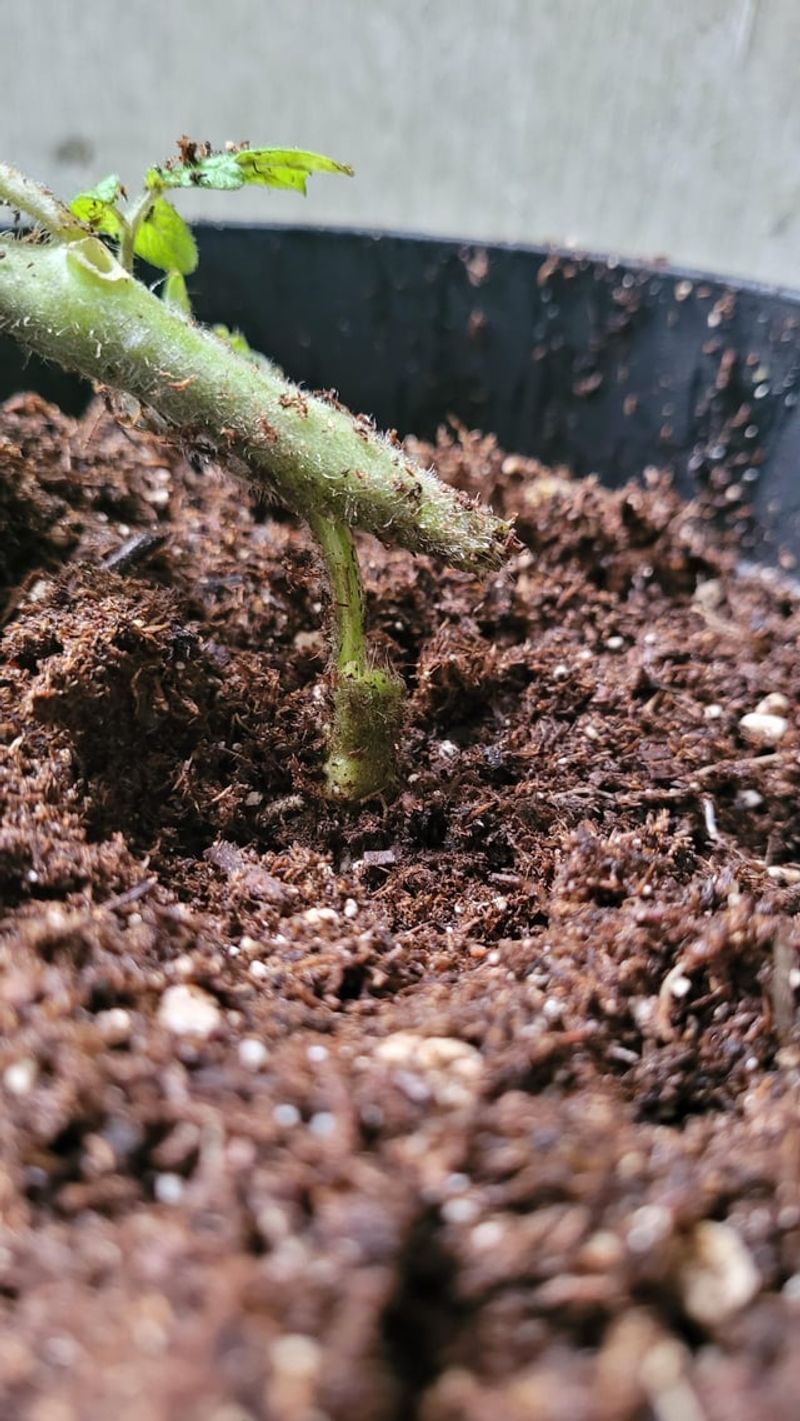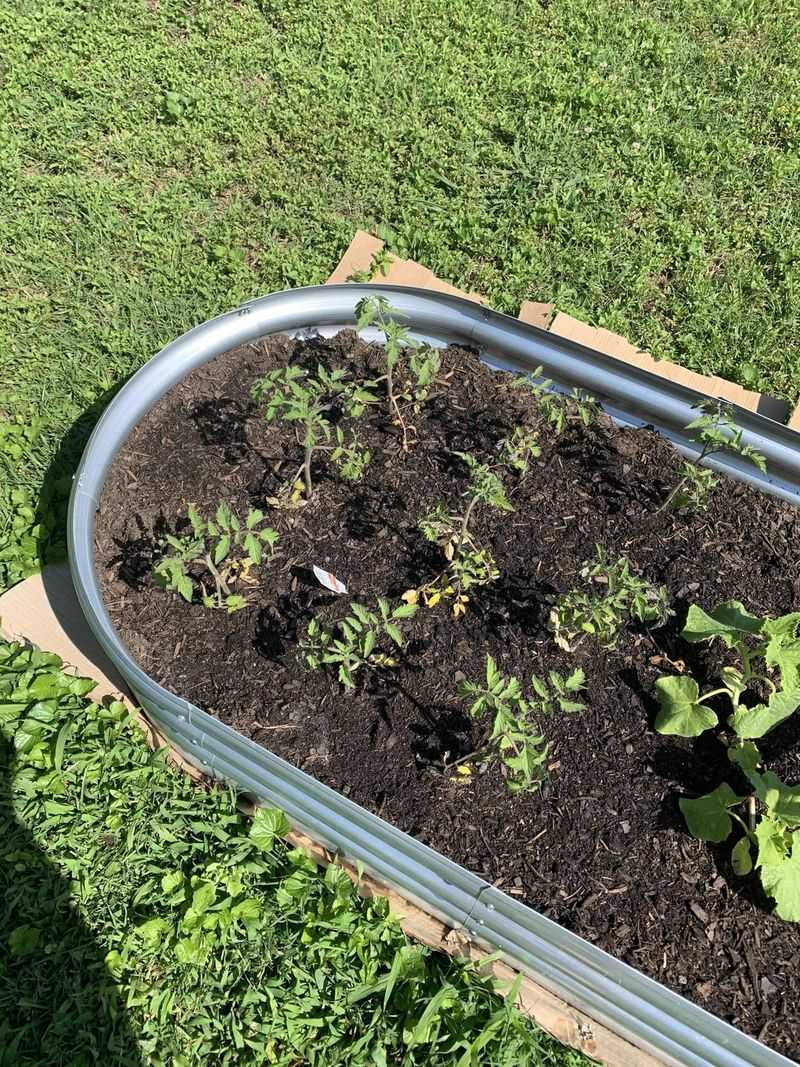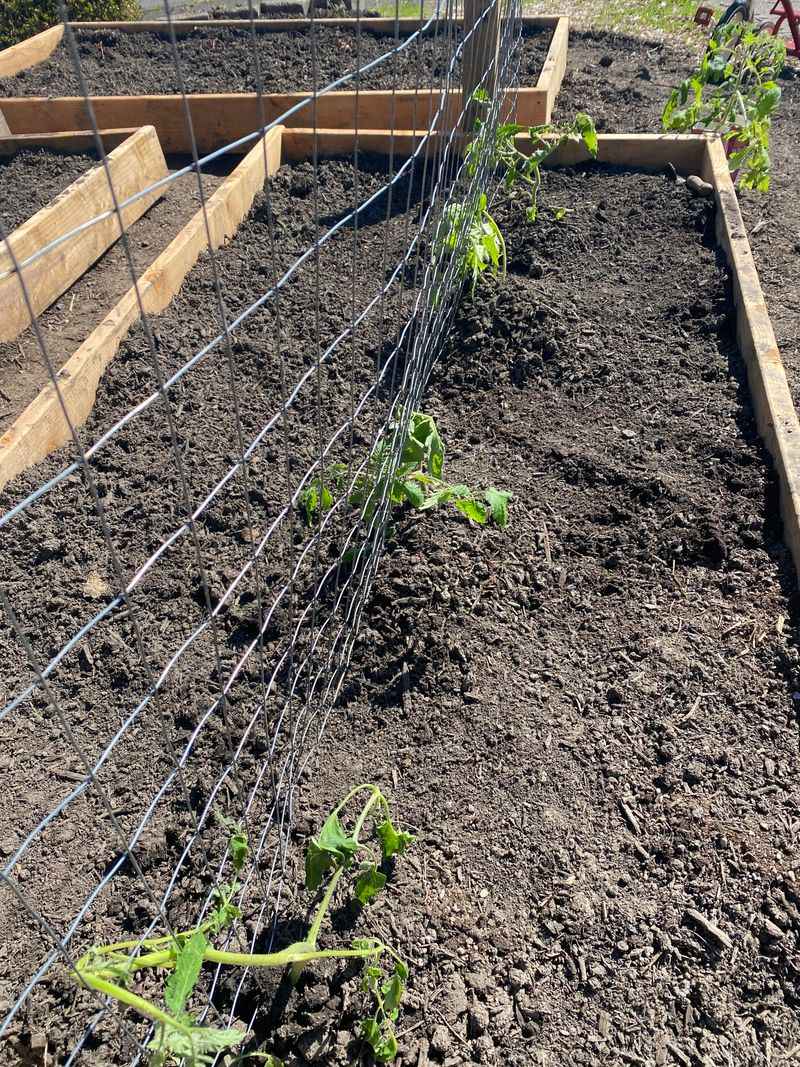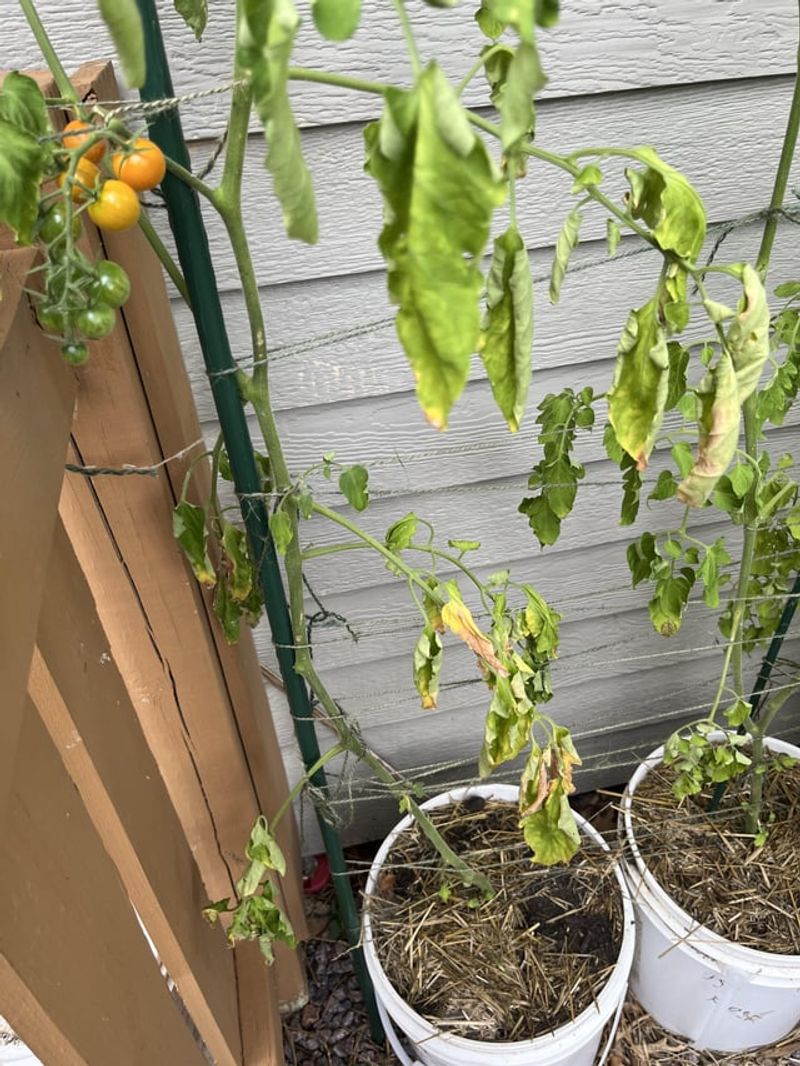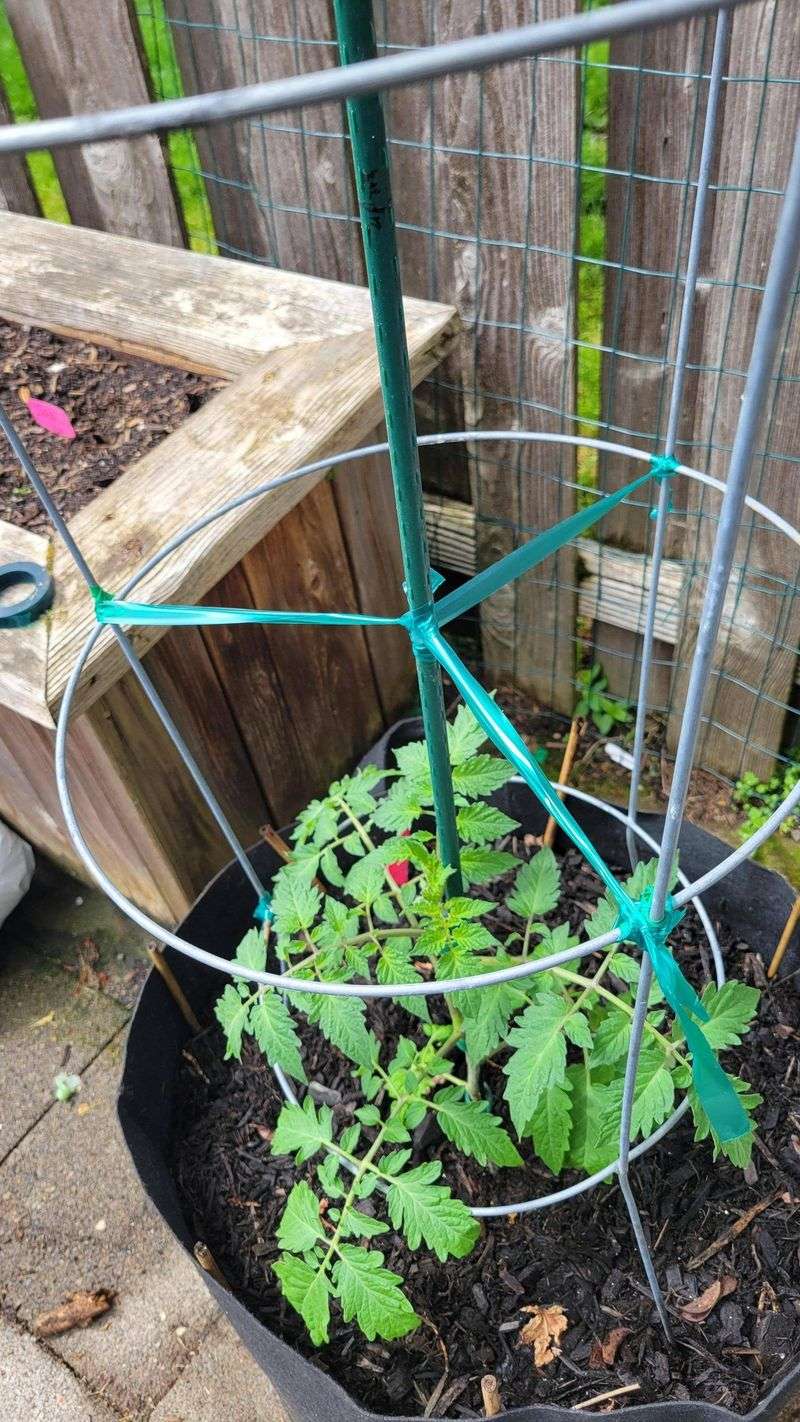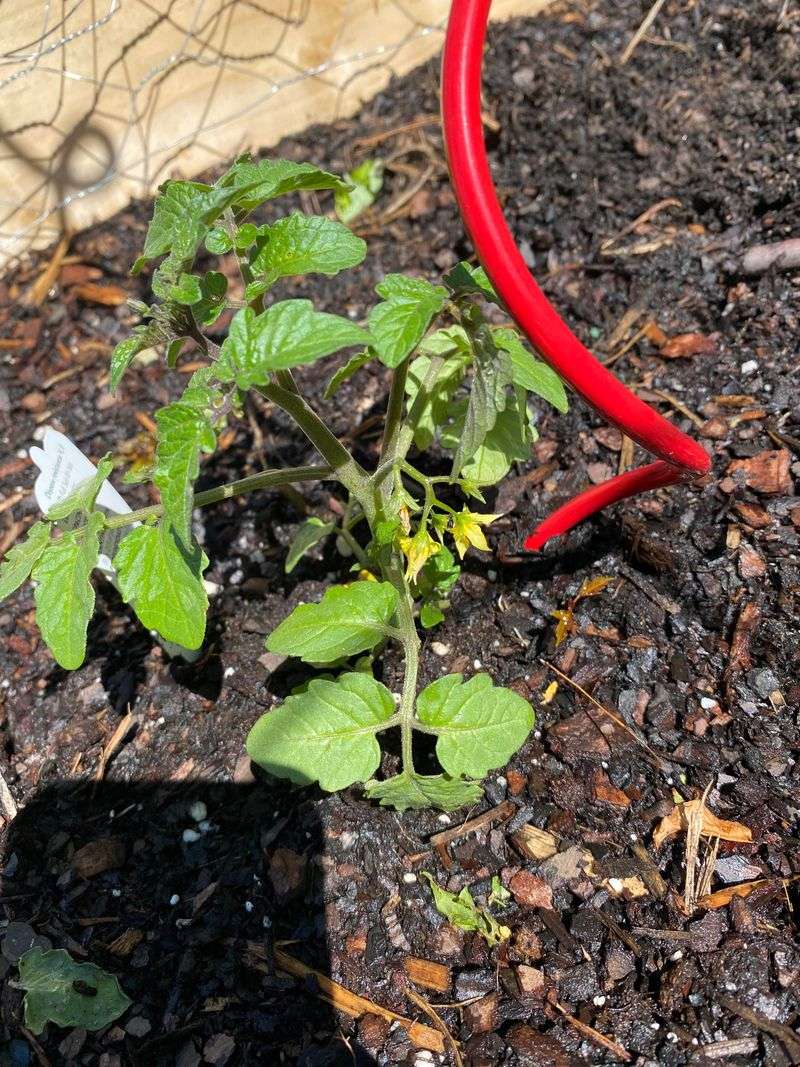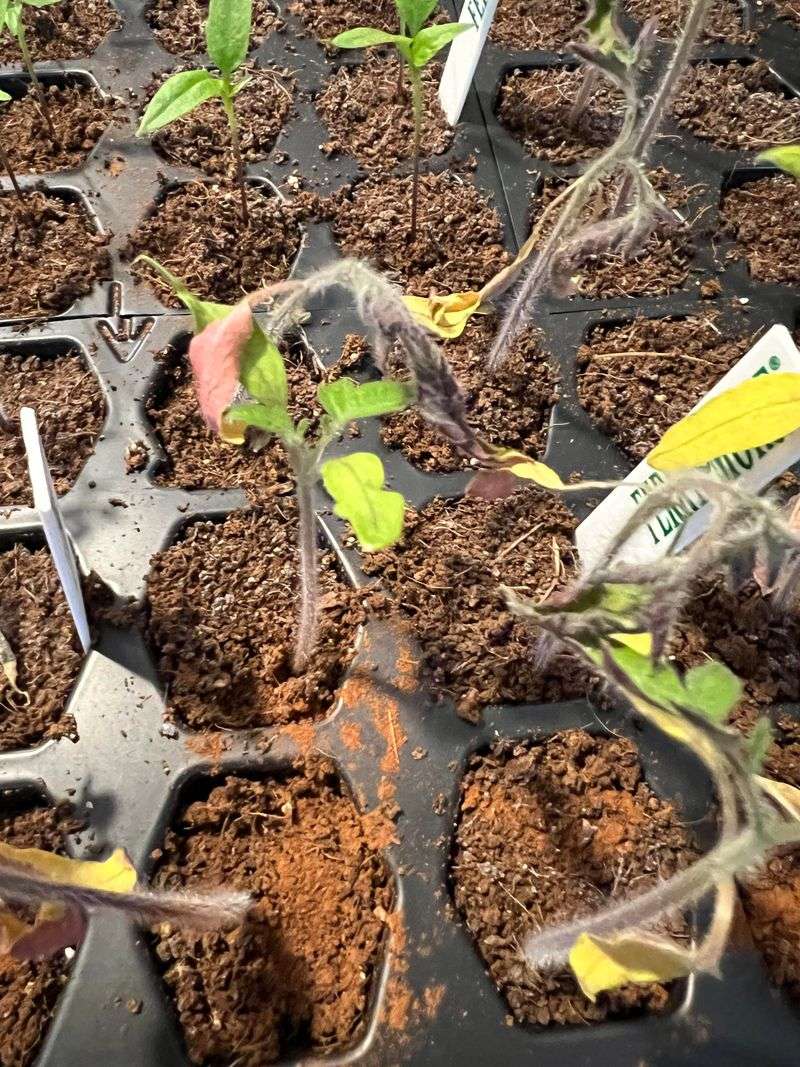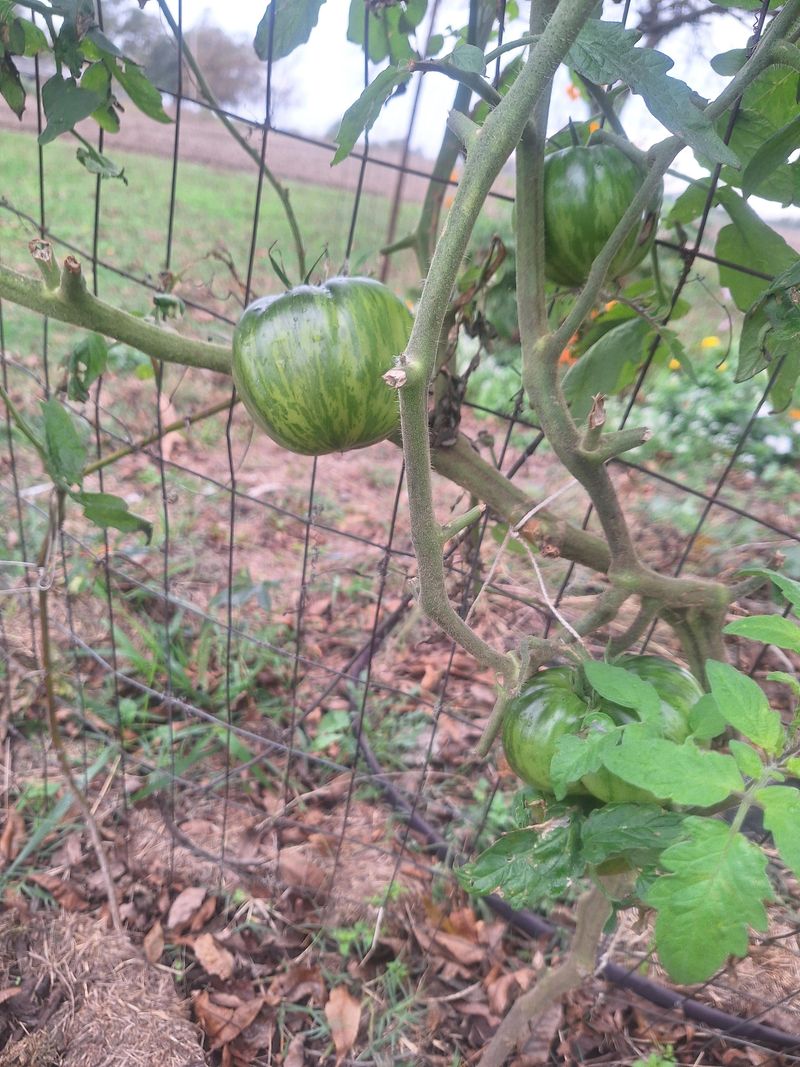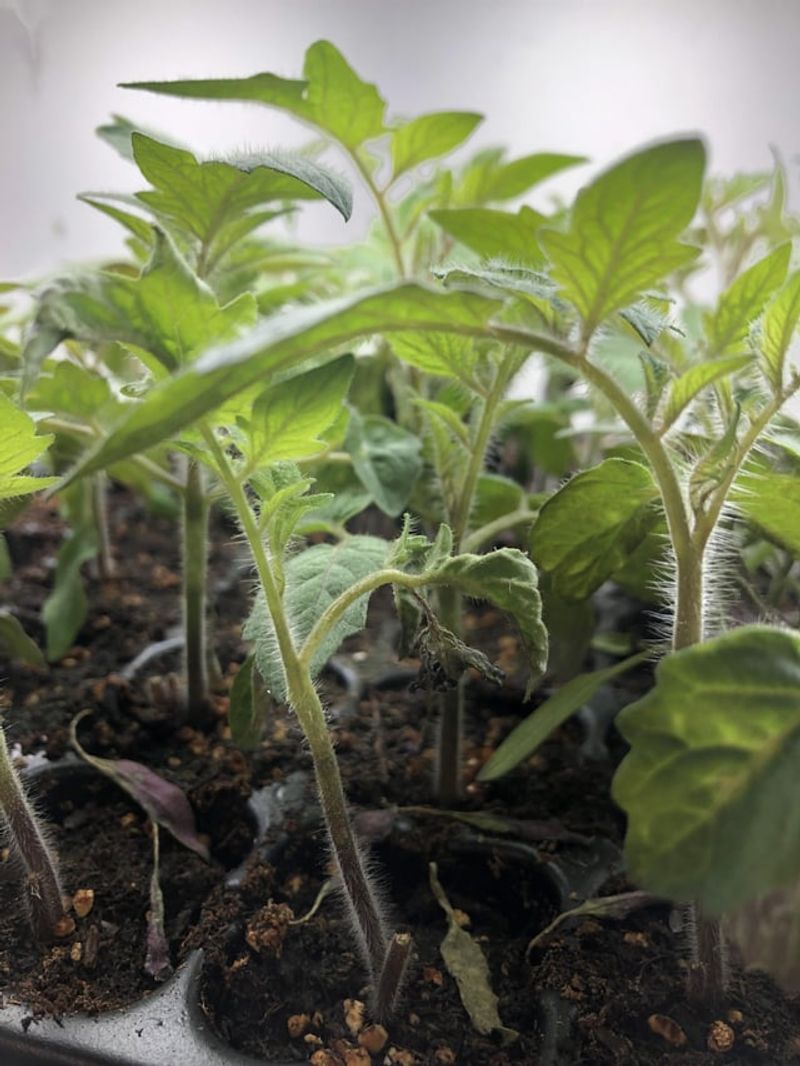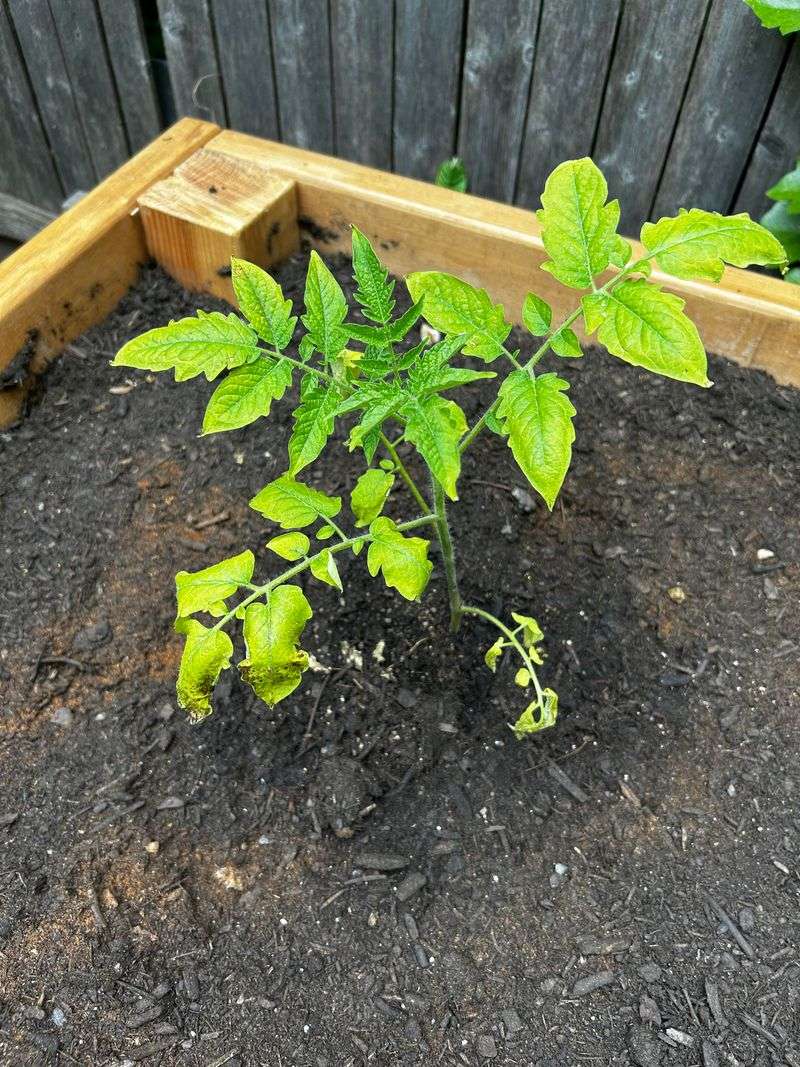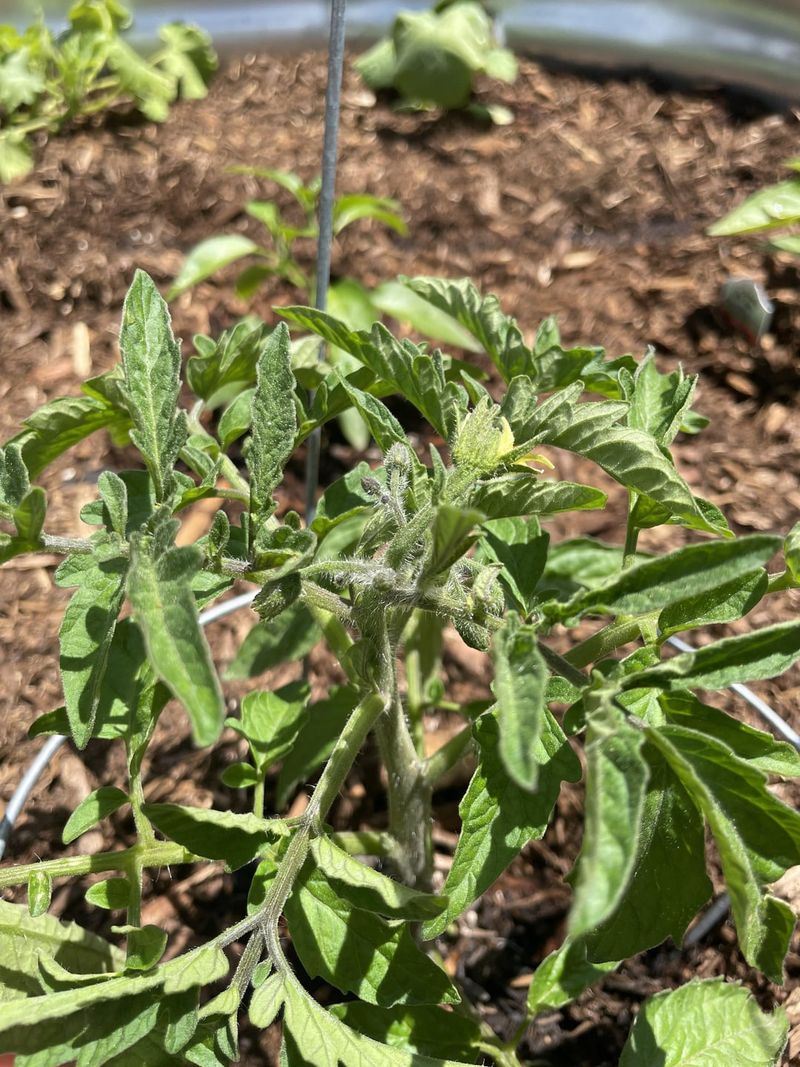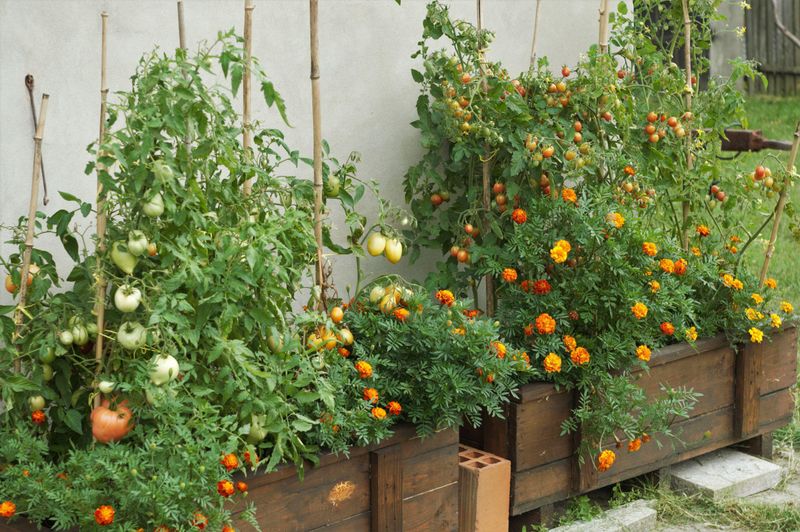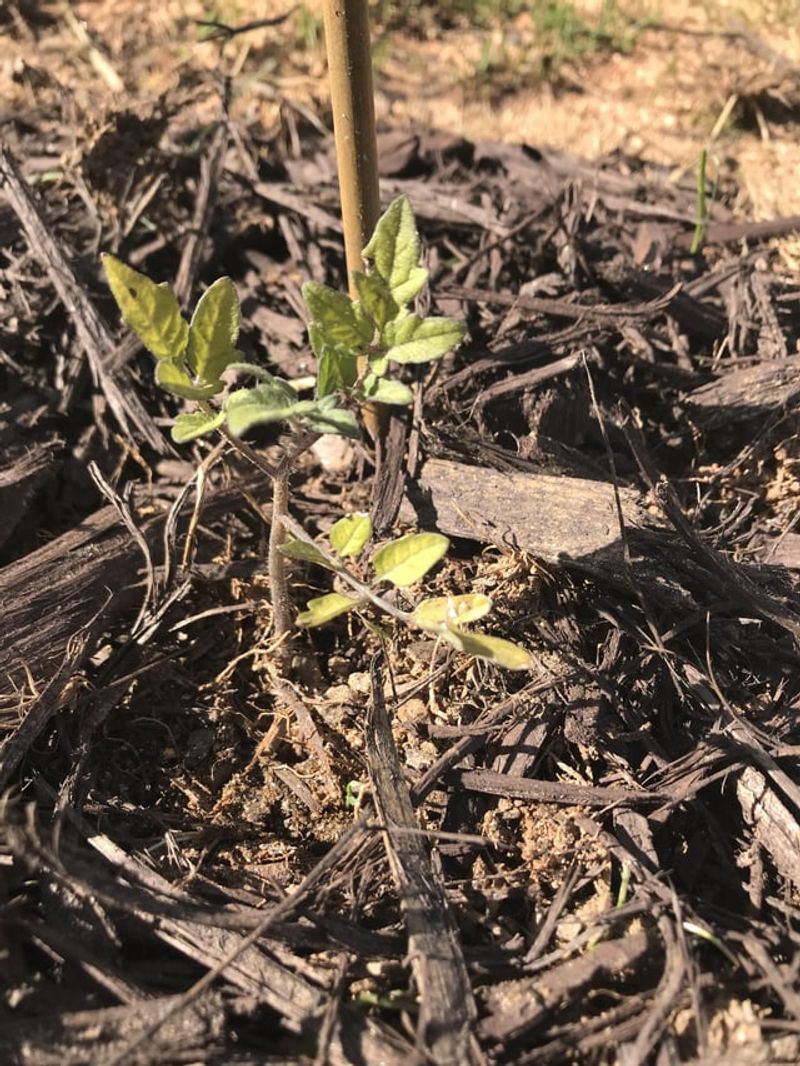Transplanting tomatoes can feel like a gamble, but after a few failed attempts, I’ve learned the tricks that make all the difference.
It turns out there’s a specific way to handle those delicate little plants so they thrive in their new spot. I’ve tried everything from planting them too deep to letting them get too much sun—let’s just say, I’ve made all the rookie mistakes.
If you want to make sure your tomatoes are set up for success, here are 15 perfect ways to transplant them—and a few things you’ll definitely want to avoid.
1. Harden Off Seedlings Before Planting
Skipping the hardening-off process is like sending your tomato babies straight from the nursery to boot camp – they’ll get shocked! Gradually expose indoor-grown seedlings to outdoor conditions over 7-10 days before transplanting.
Place seedlings outside in a sheltered spot for increasing periods each day. Start with just an hour, then gradually extend to full days outdoors. The process toughens up stems and prepares plants for wind, sun, and temperature fluctuations.
Many gardeners lose seedlings by rushing transplanting. Properly hardened plants develop a slight purple tinge to stems and look stockier – signs they’re ready for garden life.
2. Choose Cloudy Days or Evening Hours
Timing matters tremendously when moving tomato seedlings to their permanent home. Transplanting on hot, sunny afternoons stresses plants severely, sometimes fatally. Instead, wait for an overcast day or plan your transplanting session for late afternoon when the sun’s intensity has diminished.
Cool conditions allow plants to settle in without battling heat stress simultaneously. Tomatoes transplanted during mild weather establish roots more quickly and suffer less transplant shock. The reduced evaporation during cloudy conditions helps maintain critical moisture levels.
Morning works well too, but avoid midday completely. Many veteran gardeners swear by transplanting just before a gentle rain for natural watering.
3. Bury Stems Deep for Stronger Plants
Tomatoes possess a magical ability most garden vegetables lack – they grow roots directly from stems! When transplanting, remove lower leaves and bury stems deep, with only the top 4-6 inches of the plant remaining above soil level. The buried portion develops extensive root systems, creating sturdier, more drought-resistant plants.
For leggy seedlings, plant horizontally in a shallow trench with just the top portion curved upward. The entire buried stem will develop roots along its length. Avoid the common mistake of planting at the same depth as the nursery pot.
Deeper planting stabilizes tall plants against wind and creates multiple pathways for water and nutrient uptake, dramatically improving your harvest potential.
4. Add Bone Meal to Planting Holes
Creating the perfect planting hole makes a world of difference for developing tomatoes. Dig holes twice as wide as the root ball and mix a handful of bone meal into the soil at the bottom. Bone meal provides phosphorus – the essential nutrient for root development and flowering.
Many gardeners skip amendments, but that initial boost helps plants establish quickly. The slow-release phosphorus continues feeding roots throughout the growing season. Avoid the mistake of using high-nitrogen fertilizers which promote leafy growth at the expense of fruit production.
For extra benefits, sprinkle mycorrhizal fungi into the hole too. These beneficial fungi form partnerships with tomato roots, essentially extending their reach and ability to absorb nutrients.
5. Space Plants Properly for Air Circulation
Cramming tomato plants together creates a recipe for disease disaster. Proper spacing allows essential air movement between plants, reducing humidity and preventing the spread of fungal problems like early blight and powdery mildew. Determinate varieties need at least 2 feet between plants, while indeterminate types require 3-4 feet.
Row spacing matters too – allow at least 4 feet between rows for easy harvesting access. Overcrowded tomatoes compete for nutrients and light, resulting in weaker plants and reduced yields. The dense foliage in packed gardens creates the perfect environment for pests to hide.
Remember that tiny seedlings grow exponentially – plan for their mature size, not their current dimensions.
6. Create a Basin Around Each Plant
Form a 2-3 inch high soil ridge in a circle around each newly transplanted tomato, creating a watering basin about 12 inches in diameter. The basin catches and directs water straight to the root zone instead of letting it run off. During initial establishment, focused watering develops deeper root systems.
Flat planting beds waste water and encourage shallow rooting. The basin method saves significant water throughout the season, especially important during summer dry spells. Fill each basin completely when watering rather than giving frequent light sprinkles.
As plants grow larger, mulch can be added inside the basin to further conserve moisture. The slight depression also makes fertilizing more efficient by keeping nutrients directly over the root zone.
7. Install Support Systems at Planting Time
Waiting until tomato plants are large to add supports damages roots and stresses plants. Install cages, stakes, or trellises at the same time you transplant seedlings. The young plants will grow into their support systems naturally without the shock of later disruption.
For indeterminate varieties that can reach 6+ feet, use substantial supports – flimsy dollar-store cages collapse under fruit weight. Heavy-gauge concrete reinforcing wire bent into cylinders makes excellent, long-lasting cages. Wooden stakes should be at least 6 feet tall and driven 12 inches into the ground.
Early support trains plants to grow upright from the beginning, improving air circulation and keeping fruit off the ground where pests and diseases lurk.
8. Water Deeply Immediately After Transplanting
Immediately after setting plants in the ground, give each transplant a thorough, deep watering. Pour water slowly at the base until the soil is saturated and slight puddling occurs. The generous initial watering eliminates air pockets around roots and ensures good soil contact for optimal growth.
Add a half-gallon of diluted fish emulsion or compost tea to the water for an extra boost. Avoid the common mistake of light surface watering which encourages shallow root development. Deep watering trains roots to grow downward, creating more drought-resistant plants.
For extra insurance against transplant shock, some gardeners use a starter solution containing vitamin B1 (thiamine), which helps stimulate new root growth and reduces stress during the critical establishment period.
9. Apply Mulch to Maintain Moisture
Mulching newly transplanted tomatoes creates a protective barrier that conserves moisture, suppresses weeds, and stabilizes soil temperature. Wait until the soil warms completely before applying a 2-3 inch layer of organic mulch like straw, shredded leaves, or grass clippings around plants.
Keep mulch a few inches away from stems to prevent rot issues. The mulch layer significantly reduces watering needs and prevents soil from splashing onto leaves during rain, which can spread soil-borne diseases. Unmulched tomatoes struggle with moisture fluctuations that lead to problems like blossom end rot.
As organic mulches break down, they gradually add nutrients to the soil, feeding plants throughout the season and improving soil structure for future gardens.
10. Protect Transplants from Late Frosts
Eager gardeners often rush tomatoes into the ground before danger of frost has passed. When unexpected late frosts threaten, cover plants with specialized frost cloth, cloches, or even simple overturned buckets overnight. The coverings trap ground heat around plants, often providing 4-6 degrees of protection – enough to save plants from light frosts.
Remove covers in the morning once temperatures rise. For extended cold periods, consider using Wall O’ Water season extenders or milk jugs with bottoms removed. Never leave plastic touching foliage as it transfers cold directly to leaves.
Keep old sheets or frost cloth ready throughout spring. Even established transplants suffer damage when temperatures drop below 45°F, stunting growth for weeks.
11. Provide Partial Shade for First Week
Creating temporary shade for newly transplanted tomatoes dramatically improves survival rates. Use shade cloth, old window screens, or even leafy branches stuck in the ground to filter harsh sunlight during the first 5-7 days after transplanting. The dappled light reduces transplant shock while plants establish new roots.
Commercial shade cloth with 30-40% light reduction works perfectly. For DIY options, prop cardboard on the south or west side of plants during the hottest part of the day. Unshaded transplants often develop yellowed, curled leaves as they struggle to balance water uptake with evaporation.
Gradually remove shade over several days rather than suddenly exposing plants to full sun. The gentle transition helps leaves adapt to increased light intensity without scorching.
12. Avoid Fertilizing Immediately After Transplanting
Applying fertilizer right after transplanting can burn delicate roots and actually delay establishment. Hold off on fertilizing for at least 1-2 weeks after moving plants to the garden. Fresh transplants need to focus energy on developing new roots, not on processing nutrients.
When you do begin fertilizing, start with half-strength applications. Tomatoes don’t require high nitrogen – excessive nitrogen produces lush foliage at the expense of fruit production. Look for formulations specifically designed for tomatoes with higher phosphorus and potassium levels.
Many gardeners make the mistake of over-fertilizing in an attempt to speed growth. Patient gardeners who wait for plants to establish before feeding are rewarded with healthier, more productive plants in the long run.
13. Pinch Off Early Flowers for Stronger Plants
Spotting flowers on newly transplanted tomatoes might seem exciting, but removing them redirects energy to root and stem development. Pinch off all flower clusters that appear during the first 2-3 weeks after transplanting. The temporary sacrifice leads to stronger plants and ultimately higher yields.
Use your fingers to gently remove the small yellow blooms. Plants forced to support fruit production before establishing strong root systems become stunted and less productive overall. Early fruit set particularly stresses determinate varieties, which have limited growing periods.
Commercial growers routinely remove early flowers to develop robust plants. The practice seems counterintuitive, but experienced gardeners know that delaying fruiting by a few weeks results in far more tomatoes throughout the season.
14. Plant Companion Herbs to Deter Pests
Strategic companion planting creates natural pest protection for vulnerable tomato transplants. Plant aromatic herbs like basil, marigolds, nasturtiums, or borage around tomatoes during transplanting. The strong scents confuse and repel problematic insects like hornworms and aphids.
Basil particularly enhances tomato flavor while deterring flies and mosquitoes. Marigolds release compounds into the soil that repel nematodes – microscopic worms that damage tomato roots. Avoid planting members of the cabbage family nearby, as they compete for similar nutrients.
Beyond pest control, proper companions create biodiversity that attracts beneficial insects. The diverse plantings improve pollination and bring natural predators that keep pest populations in check without chemical interventions.
15. Monitor Closely for Transplant Shock
Even with perfect technique, transplanted tomatoes may show signs of stress during the first week. Watch for wilting, yellowing lower leaves, or stunted growth – all indicators of transplant shock. Quick intervention can save struggling plants. Wilting that persists after sunset indicates genuine water stress, not just normal daytime droop.
Create temporary shade with old sheets on hot days. Apply a light foliar spray of seaweed extract to leaves early in the morning to boost recovery. Avoid the temptation to overwater stressed plants – waterlogged soil suffocates roots and compounds problems.
Most transplant shock resolves naturally within 7-10 days as plants establish new root systems. Patience combined with attentive care gets plants through the challenging transition period.

